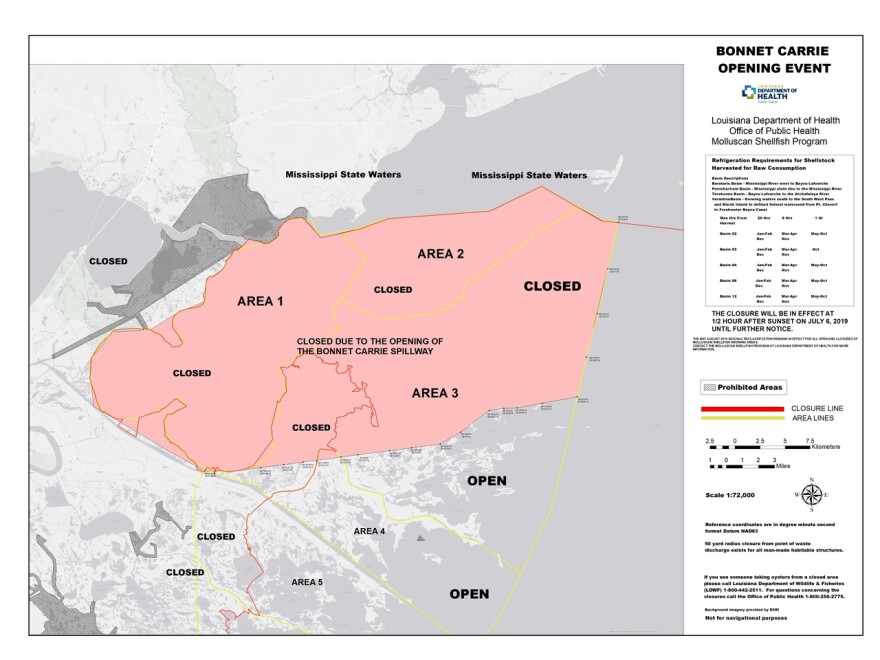Louisiana’s Department of Health is shutting down several oyster harvesting areas due to low salinity caused by a steady influx of freshwater from the Bonnet Carre Spillway.
The spillway, which diverts flood water from the Mississippi River into Lake Pontchartrain, has been open for more than 95 days this year. That’s kept a steady stream of fresh water flowing into areas where oysters grow.
Oysters need a mix of fresh and salty water to grow properly, preferring salinities between 8 and 15 parts per thousand. They can tolerate fluctuation, but long stretches outside that range can weaken and kill them.
Justin Gremillion, Chief Sanitarian of Specialty Operations at the Louisiana Department of Health, says any oysters that die during transportation after harvest are susceptible to contracting bacteria and viruses that can be harmful to humans.
“We don’t want to see that,” says Gremillion. “If any of [those dead oysters] were to accidentally slip through the system, we could potentially end up with a foodborne illness.”
After extensive water sampling for both bacteria and salinity, the health department is closing Areas 1, 2, and part of Area 3 -- which encompasses Lake Borne and its surroundings -- as a precautionary measure.

Gremillion stresses the precautionary nature of the decision -- that oysters from those areas are not inherently unsafe for consumption at the moment, but are at higher risk during transportation. Many of the state’s other oyster harvesting areas are still open, and Gremillion says any oysters found at local restaurants are safe to eat.
Support for the Coastal Desk comes from the Greater New Orleans Foundation, the Walton Family Foundation, and local listeners.



